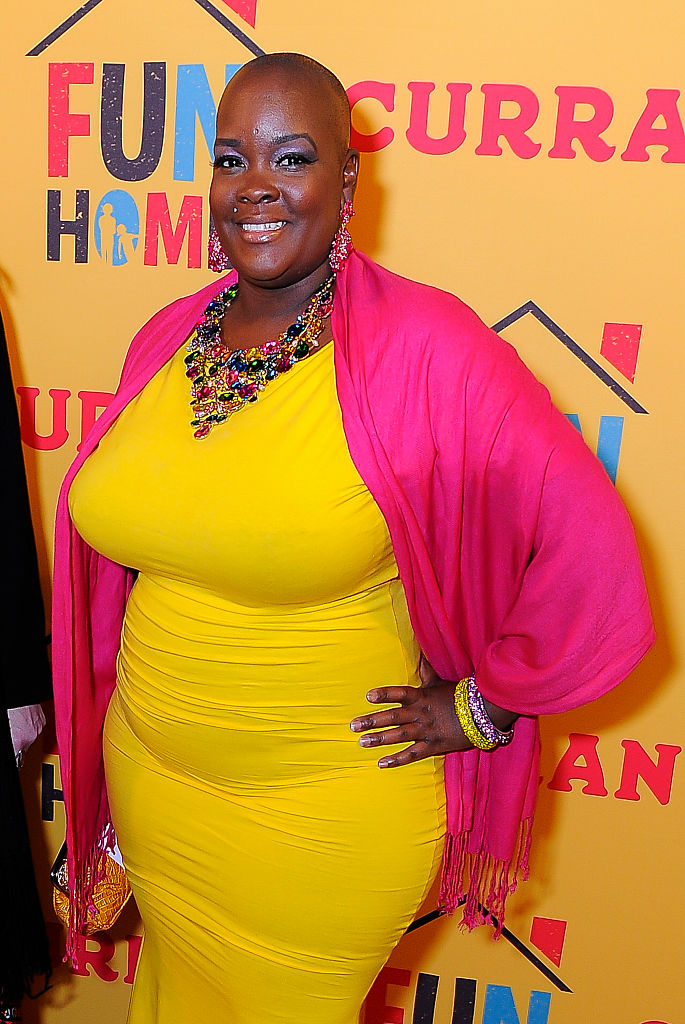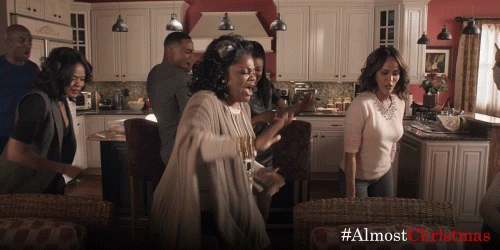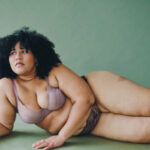
Source: Steve Jennings / Getty
It’s no secret that representation of bodies that are other than thin is lacking in television and film. And when fat bodies are represented in media, the depictions of these characters is often one dimensional or problematic.
Turner Classic Movies recently released a documentary about Body Images on Film the documentary features commentary from Jonathan Van Ness, TCM host Alicia Malone and authors and body image activists Roxane Gay and Sonya Renee Taylor.
We had the pleasure of speaking with both Gay and Taylor about fatphobia, antiBlackness.
See what Sonya had to say in our exclusive interview below.
MadameNoire: Why did you decide to participate in this documentary for Turner Classic Movies?
Sonya Renee Taylor: I think we don’t have enough conversations about film and what film does, particularly, for marginalized bodies and what are the opportunities inside of film to interrupt oppression that we see in the world.
So when they invited me, I was like this is a great opportunity to have this conversation that I think is timely and can really expand our perspective about what it is we’re watching, why it is we’re watching and what’s missing from what we’re watching.
MN: In your portion of the doc, you spoke about the willingness to empathize with a fat, male character but not that same narrative arc for women characters. Is it just misogyny or is there a deeper reason behind that?
Taylor: Laughs. Is it just misogyny? I think the foundational piece or overarching piece is patriarchy and the ways in which we’re taught to relate to men. But I also think the stories that we tell about fat women are stories that are inherently tied to their desirability. Inside of patriarchy we’ve said to women that your currency is your attractiveness. So if you are not attractive, conventionally, then there are going to be a lot of things we’re just not going to give you access to. One of those things being love, particularly inside of film.
We have a lot of additional markers of success for men beyond just their bodies. So, if you can be wealthy, if you can be savvy or smart, funny or charismatic. Those are all things that we say, ‘We will accept that as currency for desirability even if your body is not desirable. But we don’t offer those same sorts of things for women specifically as it relates to lovability.
MN: I also wanted to hear what you had to say about the intersection between antiBlackness and fat phobia. A lot of times, we think they’re unrelated. But there are actually a lot of parallels.
Taylor: I would even offer so much that they’re not even parallels. Fat phobia is born out of antiBlackness. There’s a book by Sabrina Strings, Fearing The Black Body: The Racial Origins of Fat Phobia. In the book what she proposes, through historical documentation, is that our rise for disdain for fat bodies is directly tied to chattel slavery and Christian Protestantism.
So the U.S. needed to make a distinction between bodies that you should value and bodies that were less human because of the way that they appear, such that they could create a foundation to validate chattel slavery. It’s like, ‘These bodies are so different from ours, it makes them sub-human.’ Which means that exploiting them is okay.
The science around that did not happen first. The social and economic story came first.
If those bodies are bigger and subhuman, than our assignment as white bodies must be the opposite of that and we must control for that. So thinness has to be a part of how we validate our whiteness. So the science that backs up that phobia came after the narrative that Black bodies are larger, therefore acceptable to oppress.
Now, can we get the major voices of the day, through media, through film and television and through science and medicalization. You can’t talk about fatphobia without talking about antiBlackness, period.
MN: We talk about the representation in film and television but we often talk about it from the context of the group that’s being underrepresented. What is the importance of people who do see themselves all the time, seeing a different body type?
Taylor: Part of the problem with marginalization is we treat it like it’s some sort of byproduct that fell out of the air. Oppression is just a fog that lives in the world instead of, oppression is just a function of the behaviors of people who are able to oppress. So it’s important for what we call “default bodies” in The Body Is Not An Apology for those bodies to have the story, have the narrative of being normal interrupted. Because if you don’t interrupt the narrative that those bodies are the only normal bodies, then those bodies will continue to believe that the privilege they have is earned, that the erasure of other people is what you should expect, that their perspective is the dominant and therefore the most valuable one in the world.
Diversity is useful in this context in helping privileged and default bodies interrupt their own story that their privilege and defaultness is acceptable and should be that way. Otherwise, we’re asking them to interrupt a world that they don’t have a reason to, they don’t have a psychological pathway to even begin to investigate. So it’s important for us to open up the door so that they can also interrupt their narrative as well as the narrative of marginalized folks.

MN: Can you recall an authentic depiction of a fat, Black woman in television or film?
Taylor: This is the movie that’s coming to my mind is Almost Christmas. Mo’Nique was in it. And what I loved about that film, I remember leaving it saying, it’s a film with Mo’Nique in it that’s not about Mo’Nique being fat. She was just an auntie, that traveled the world and also couldn’t could. And I also loved that. ‘Oh she can’t even cook.’ She’s not in service to anybody else. She’s just living her best life. The fact that I found it so noticeable in a movie that’s not that noticeable. It’s not like Almost Christmas is cinematic greatness. But it was fun and here is this Black woman, who has a history of playing roles about being a fat Black woman, just being a fat Black woman and her fatness is not at all a part of the narrative.
MN: What would you like to see more of in terms of fat, Black women in film and television?
Taylor: I think it’s dishonest to pretend that people don’t have questions about their bodies. But here’s the thing too. I’m actually thinking about the fat, Black women in my life, yes, those conversations come up. But they’re by no stretch of the imagination, the central conversation in our lives. They are in passing, like anything else. So what I would like to see is fat, Black women living the fullness of their lives, in the proportions that are realistic. So I’m not saying we can never talk about weight, although I have questions about how we talk about weight. But I’m also proposing—my grandmother spent time talking about them people at her job who got on her nerves, about what was going on down the street with the neighbors. She talked with her sister and mother about the family dynamics. I want to see the conversations that are real and true to our lives and for them to be in appropriate portion to the experience that we’re having. Proportionately, nobody in my life is talking about weight as much as they be talking about it on film and television.


